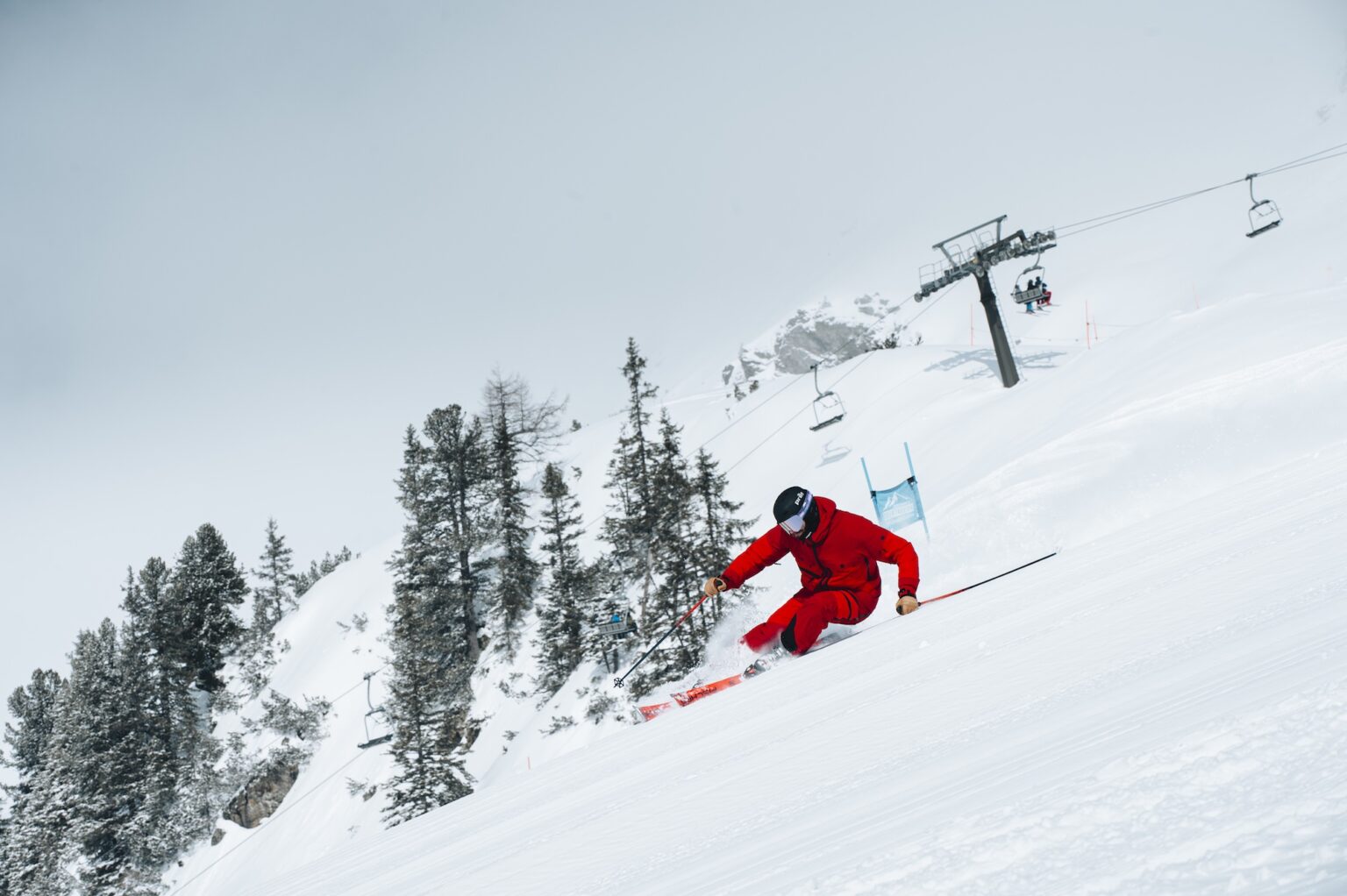Speed Freaks – How To Ski Fast


Speed is your friend, and you can’t get hurt in the air! It’s a well-known expression, but not entirely accurate. The message is meant for those about to hit a big kicker, where you need speed to carry you over the knuckle and coming up short can be painful.
As for getting hurt in the air, it’s rare but can happen, I have seen people throw their shoulders out through wild windmilling, and once saw a young Italian downhill racer try to jump the camel bumps in Val Gardena carrying a shovel. It caught the wind, flipped around, and hit him on the back of the head – but that’s another story.
When I was on the British Downhill ski team, back in the days when we still had one, we coined the term Rapid Deceleration Syndrome (R.D.S.), meaning it was never the speed at which you fell that did the damage, but what you hit on your way down. The same message holds true for anyone skiing fast on a recreational piste; it is what, or more importantly who you might hit that is the danger. The FIS rules state: “A skier or snowboarder must move in control. He must adapt his speed and manner of skiing or snowboarding to his personal ability and to the prevailing conditions of terrain, the snow and weather, as well as to the density of traffic.” So, how do you ski fast safety?
Every resort will have a section where you need to schuss across a long flat, and nobody wants to end up pushing.
Firstly, let’s look at the physics: gravity is a constant, but both frictional and aerodynamic drag will vary depending on how well your skis are running and how well you tuck.
Aerodynamic drag increases with a square of your speed – if are going fast, tuck low because that is when it will help, and it is the most stable position. Assuming all skiers are of a similar density (insert joke here) then, a bigger skier will have the advantage with more mass compared to their surface area to push through the aerodynamic drag, and giving more momentum to fight against the frictional drag. That’s why kids start schussing from so high yet never seem to make it across the flat.
Modern carving skis are not best suited to straight-lining at speed – I know from experience that a pair of 168cm 13.5m radius skis will feel like they are flapping around your ears at 60mph. Riding a flat ski by relaxing and spreading your feet in your boots will allow you to glide more efficiently but can cause you to catch an edge if you do not shift your weight back onto your heels. Again, a low tuck position will help, because, as your bum goes downwards, it naturally goes back, even with your arms pushed forward, as your arms weigh less than your bum.
Both frictional and aerodynamic drag will vary depending on how well your skis are running and how well you tuck
Slipstreaming was never much use to me when I was racing World Cup downhills, but in ski cross it is a very important tactic which can also be transferred to the recreational piste. Again, the faster you are going the more advantage there is in following another a skier. Racing a charity race, 24 Hours of Aspen, with my brother Martin as a two-man team, we set the fastest speed down Spar Gulch at 95mph. I was following Martin on that run and the pull of the slipstream was so great that I could stand up and look over his head at the track ahead.
Of course, everyone now has the possibility to track their speed though their phones, something that has made instructing and leading groups quite challenging. Working with a group of male clients in Val d’Isère, a couple of seasons ago, their only concern was the speeds recorded. So, on day two, I took them down the Johan Clarey in Tignes, the final schuss is 35º steep and was empty. You should have seen the looks on their faces when I said we are going to tuck it out from here, a good 500m from the bottom. One of them crashed with a 200m yard sale, he was unhurt, but the rest set their highest ever speeds.